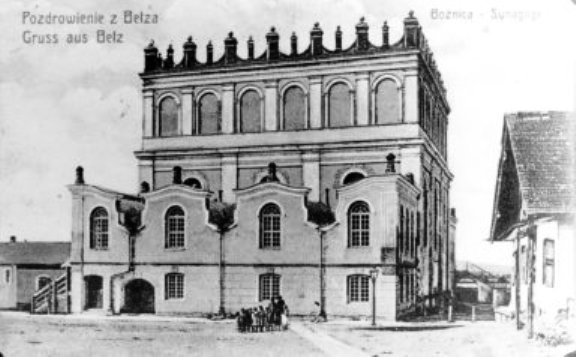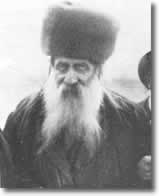|
Zechariah Mendel Ben Aryeh Leib
Zechariah Mendel ben Aryeh Leib (died c.1706) (Hebrew: זכריה מנדל בן אריה ליב) was a Polish Talmudist, native of Cracow. In 1689 he became chief rabbi and head of the yeshivah at Belz, Galicia. He was the author of '' Be'er Heitev'', a well-known commentary on the ''Shulchan Aruch'', ''Yoreh De'ah'', and ''Ḥoshen Mishpaṭ'' (first edition of the first part, Amsterdam, 1754; of the second, ib. 1764); the work is principally a compendium of the ''Sifte Kohen'' and ''Ṭure Zahav.'' His descendants include Rebbetzin Malka Rokeach of Belz Belz ( uk, Белз; pl, Bełz; yi, בעלז ') is a small city in Lviv Oblast of Western Ukraine, near the border with Poland, located between the Solokiya river (a tributary of the Bug River) and the Richytsia stream. Belz hosts the administ .... References Its bibliography: *Azulai, Shem ha-Gedolim, ii., s.v. Be'er Heṭeb; * Fuenn, Keneset Yisrael, p. 318. 18th-century Polish–Lithuanian rabbis Rabbis fr ... [...More Info...] [...Related Items...] OR: [Wikipedia] [Google] [Baidu] |
Hebrew
Hebrew (; ; ) is a Northwest Semitic language of the Afroasiatic language family. Historically, it is one of the spoken languages of the Israelites and their longest-surviving descendants, the Jews and Samaritans. It was largely preserved throughout history as the main liturgical language of Judaism (since the Second Temple period) and Samaritanism. Hebrew is the only Canaanite language still spoken today, and serves as the only truly successful example of a dead language that has been revived. It is also one of only two Northwest Semitic languages still in use, with the other being Aramaic. The earliest examples of written Paleo-Hebrew date back to the 10th century BCE. Nearly all of the Hebrew Bible is written in Biblical Hebrew, with much of its present form in the dialect that scholars believe flourished around the 6th century BCE, during the time of the Babylonian captivity. For this reason, Hebrew has been referred to by Jews as '' Lashon Hakodesh'' (, ) since an ... [...More Info...] [...Related Items...] OR: [Wikipedia] [Google] [Baidu] |
History Of Jews In Poland
The history of the Jews in Poland dates back at least 1,000 years. For centuries, Poland was home to the largest and most significant Ashkenazi Jewish community in the world. Poland was a principal center of Jewish culture, because of the long period of statutory religious tolerance and social autonomy which ended after the Partitions of Poland in the 18th century. During World War II there was a nearly complete genocidal destruction of the Polish Jewish community by Nazi Germany and its collaborators of various nationalities, during the German occupation of Poland between 1939 and 1945, called the Holocaust. Since the fall of communism in Poland, there has been a renewed interest in Jewish culture, featuring an annual Jewish Culture Festival, new study programs at Polish secondary schools and universities, and the opening of Warsaw's Museum of the History of Polish Jews. From the founding of the Kingdom of Poland in 1025 until the early years of the Polish–Lithuanian Commo ... [...More Info...] [...Related Items...] OR: [Wikipedia] [Google] [Baidu] |
Talmudist
The Talmud (; he, , Talmūḏ) is the central text of Rabbinic Judaism and the primary source of Jewish religious law (''halakha'') and Jewish theology. Until the advent of modernity, in nearly all Jewish communities, the Talmud was the centerpiece of Jewish cultural life and was foundational to "all Jewish thought and aspirations", serving also as "the guide for the daily life" of Jews. The term ''Talmud'' normally refers to the collection of writings named specifically the Babylonian Talmud (), although there is also an earlier collection known as the Jerusalem Talmud (). It may also traditionally be called (), a Hebrew abbreviation of , or the "six orders" of the Mishnah. The Talmud has two components: the Mishnah (, 200 CE), a written compendium of the Oral Torah; and the Gemara (, 500 CE), an elucidation of the Mishnah and related Tannaitic writings that often ventures onto other subjects and expounds broadly on the Hebrew Bible. The term "Talmud" may refer to either ... [...More Info...] [...Related Items...] OR: [Wikipedia] [Google] [Baidu] |
Yeshivah
A yeshiva (; he, ישיבה, , sitting; pl. , or ) is a traditional Jewish educational institution focused on the study of Rabbinic literature, primarily the Talmud and halacha (Jewish law), while Torah and Jewish philosophy are studied in parallel. The studying is usually done through daily ''shiurim'' (lectures or classes) as well as in study pairs called '' chavrusas'' (Aramaic for 'friendship' or 'companionship'). ''Chavrusa''-style learning is one of the unique features of the yeshiva. In the United States and Israel, different levels of yeshiva education have different names. In the United States, elementary-school students enroll in a ''cheder'', post- bar mitzvah-age students learn in a ''metivta'', and undergraduate-level students learn in a ''beit midrash'' or ''yeshiva gedola'' ( he, ישיבה גדולה, , large yeshiva' or 'great yeshiva). In Israel, elementary-school students enroll in a ''Talmud Torah'' or ''cheder'', post-bar mitzvah-age students lear ... [...More Info...] [...Related Items...] OR: [Wikipedia] [Google] [Baidu] |
Belz
Belz ( uk, Белз; pl, Bełz; yi, בעלז ') is a small city in Lviv Oblast of Western Ukraine, near the border with Poland, located between the Solokiya river (a tributary of the Bug River) and the Richytsia stream. Belz hosts the administration of Belz urban hromada, one of the hromadas of Ukraine. Its population is approximately . Origin of name There are a few theories as to the origin of the name: * Celtic languages, Celtic – ''belz'' (water) or ''pelz'' (stream), * German language, German – ' (fur, furry) * Old Slavic language, Old Slavic and the Boykos, Boyko language – «белз» or «бевз» (muddy place), * Old East Slavic – «бълизь» (white place, a glade in the midst of dark woods). The name occurs only in two other places, the first being a Celtic area in antiquity, and the second one being derived from its Romanian name: * ''Belz, Morbihan, Belz'' (department Morbihan), Brittany, France * ''Bălți'' (/''Beljcy'', also known in Yiddish as ... [...More Info...] [...Related Items...] OR: [Wikipedia] [Google] [Baidu] |
Galicia (Central Europe)
Galicia ()"Galicia" '''' ( uk, Галичина, translit=Halychyna ; pl, Galicja; yi, גאַליציע) is a historical and geographic region spanning what is now southeastern and western , long part of the . ... [...More Info...] [...Related Items...] OR: [Wikipedia] [Google] [Baidu] |
Be'er Heitev
''Ba'er Hetev'' (also ''Ba'er Heiteiv''; Hebrew באר היטב lit. "explaining well" or "explained well", based on Deut. 27:8; the vocalization "Be'er" is a traditional alternative) is a Hebrew commentary on the Shulchan Aruch, the chief codification of Jewish law. The commentary's two halves were authored by different individuals. On the sections of ''Orach Chaim'' and ''Even HaEzer'', the commentary was written by Yehudah ben Shimon Ashkenazi (d. 1743), rabbi of Tykocin, Poland. On the sections of ''Choshen Mishpat'' and ''Yoreh De'ah'', the commentary was written by Zechariah Mendel ben Aryeh Leib Zechariah Mendel ben Aryeh Leib (died c.1706) (Hebrew: זכריה מנדל בן אריה ליב) was a Polish Talmudist, native of Cracow. In 1689 he became chief rabbi and head of the yeshivah at Belz, Galicia. He was the author of '' Be'er He ..., a Polish rabbi who lived in the 17th and 18th centuries. References {{Judaism-book-stub Rabbinic legal texts and responsa He ... [...More Info...] [...Related Items...] OR: [Wikipedia] [Google] [Baidu] |
Shulchan Aruch
The ''Shulchan Aruch'' ( he, שֻׁלְחָן עָרוּך , literally: "Set Table"), sometimes dubbed in English as the Code of Jewish Law, is the most widely consulted of the various legal codes in Judaism. It was authored in Safed (today in Israel) by Joseph Karo in 1563 and published in Venice two years later. Together with its commentaries, it is the most widely accepted compilation of Jewish law ever written. The ''halachic'' rulings in the ''Shulchan Aruch'' generally follow Sephardic law and customs, whereas Ashkenazi Jews generally follow the halachic rulings of Moses Isserles, whose glosses to the ''Shulchan Aruch'' note where the Sephardic and Ashkenazi customs differ. These glosses are widely referred to as the ''mappah'' (literally: the "tablecloth") to the ''Shulchan Aruch's'' "Set Table". Almost all published editions of the ''Shulchan Aruch'' include this gloss, and the term "Shulchan Aruch" has come to denote ''both'' Karo's work as well as Isserles', with Karo ... [...More Info...] [...Related Items...] OR: [Wikipedia] [Google] [Baidu] |
Rebbetzin
Rebbetzin ( yi, רביצין) or Rabbanit ( he, רַבָּנִית) is the title used for the wife of a rabbi—typically among Orthodox, Haredi, and Hasidic Jews—or for a female Torah scholar or teacher. Etymology The Yiddish word has a trilingual etymology: Hebrew, ''rebbə'' ("master"); the Slavic feminine suffix, ''-itsa''; and the Yiddish feminine suffix, ''-in.'' A male or female rabbi may have a male spouse but, as women and openly gay men were prohibited from the rabbinate for most of Jewish history, there has historically been no specific term for the male spouse of a rabbi. In a 2020 piece, Rob Eshman, the national editor of ''The Forward'' and the husband of a female rabbi, wrote: "Nobody knew what to call me" because "there wasn't a word for what I was." Some contemporary male spouses of rabbis have chosen to call themselves "rebbetzers." Community roles In many Orthodox communities, rebbetzins have the role of spiritual counselors. In circles such as the ... [...More Info...] [...Related Items...] OR: [Wikipedia] [Google] [Baidu] |
Malka Rokeach
Malka Rokeach ( he, מלכה רוקח) was the first ''rebbetzin'' of the Hasidic dynasty of Belz. She was the wife of Rabbi Sholom Rokeach, the first ''rebbe'' of Belz, and the mother of the second ''rebbe'' of the dynasty, Rabbi Yehoshua Rokeach. She was directly involved in the ongoings in her husband's court. Life She was born in 1780 to Rabbi Yissachar Dov Ramraz of Sokal, Galicia and Rebbetzin Chana Rachel (née Tisminitzer), a great-granddaughter of Rabbi Zechariah Mendel ben Aryeh Leib of Cracow, author of '' Ba'er Hetev'' on ''Yoreh De'ah'' and ''Choshen Mishpat''. Malka married her first-cousin, Rabbi Sholom Rokeach, son of Rabbi Elazar Rokeach and Rebbetzin Rivka Henna Ramraz, her father's sister. They had five sons and two daughters. Rabbi Sholom considered Malka as his partner in his Torah study and in all of his spiritual endeavors. He said that when he took it upon himself to remain awake one thousand nights to study Torah, Malka stood at his side to ensure that ... [...More Info...] [...Related Items...] OR: [Wikipedia] [Google] [Baidu] |
Belz (Hasidic Dynasty)
Belz ( yi, בעלזא) is a Hasidic dynasty founded in the town of Belz in Western Ukraine, near the Polish border, historically the Crown of the Kingdom of Poland. The group was founded in the early 19th century by Rabbi Shalom Rokeach, also known as the ''Sar Shalom'', and led by his son, Rabbi Yehoshua Rokeach, and grandson, Rabbi Yissachar Dov, and great-grandson, Rabbi Aharon, before the Nazi invasion of Poland in 1939. While Rabbi Aharon managed to escape Europe, together with his brother Rabbi Mordechai Rokeach, most of the Belz Hasidim were murdered in the Holocaust. Rabbi Aharon re-established the Hasidic community in Israel following World War II. At present Belz has sizable communities in Israel, Western Europe, and the Anglosphere. History The founder of the dynasty was Rabbi Shalom Rokeach, also known as the ''Sar Shalom'', who was inducted as rabbi of Belz in 1817. He personally helped build the city's large and imposing synagogue. Dedicated in 1843, the buildin ... [...More Info...] [...Related Items...] OR: [Wikipedia] [Google] [Baidu] |





